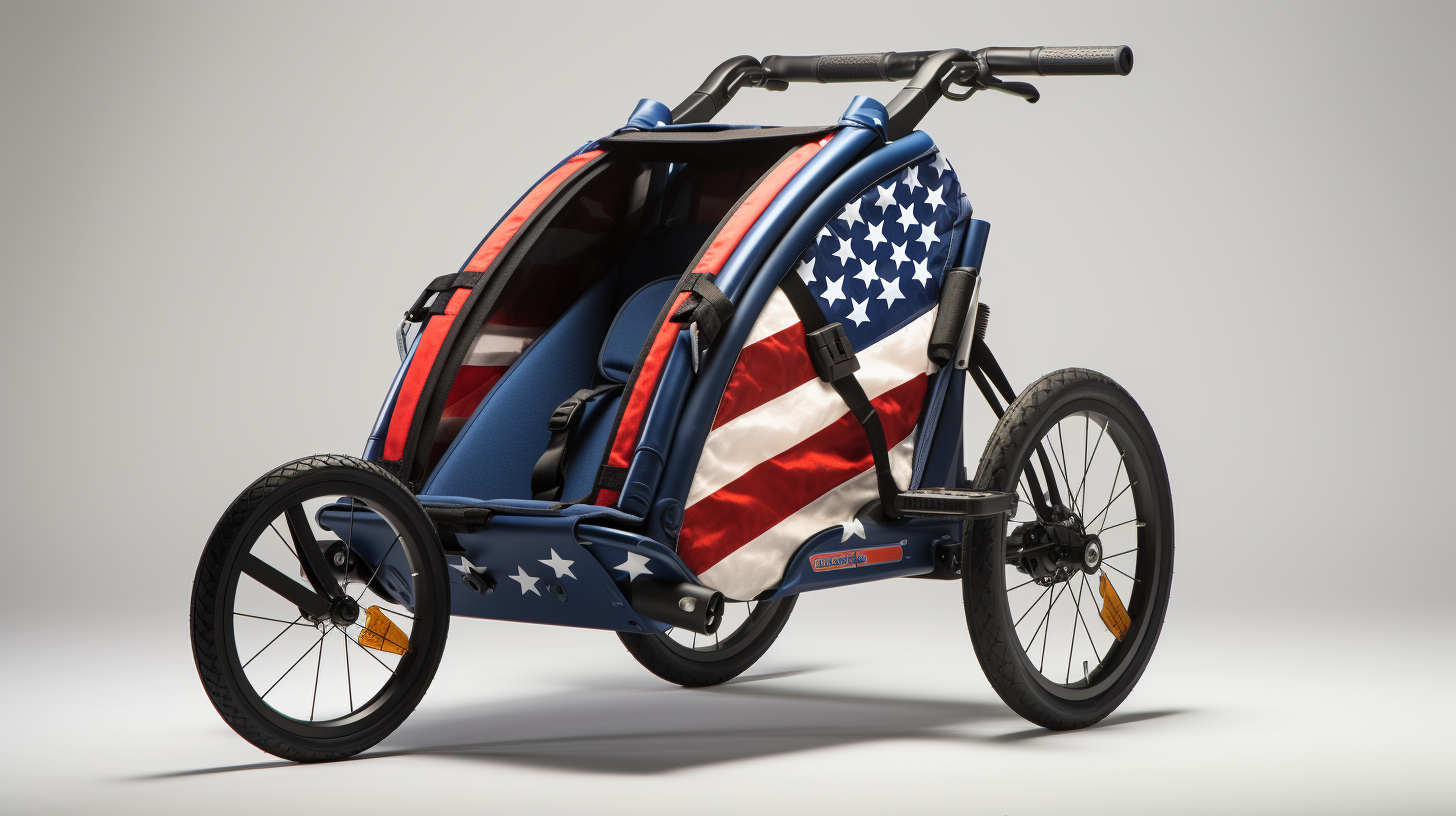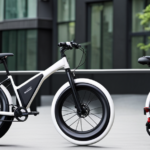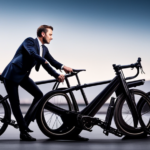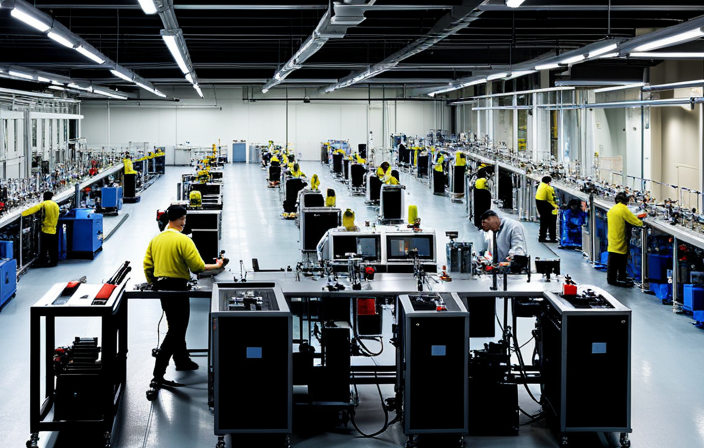Picture yourself feeling the wind in your hair as you smoothly cruise through urban streets, with a grin on your face and a feeling of liberation in your heart. Make this dream come true with an electric bike conversion kit.

In this guide, I will share my expert knowledge and experience to help you select the perfect kit for your needs. From assessing compatibility to choosing the right motor and battery, I will guide you through every step of the process so you can make an informed decision and embark on your electric biking adventure with confidence.
Key Takeaways
- Online forums and user reviews provide valuable information and recommendations for selecting an electric bike conversion kit.
- Consider budget and value when choosing a kit, ensuring that quality and performance are not compromised.
- Assess the performance specifications of the kit, including motor power, battery capacity, and range, to meet specific needs.
- Evaluate the quality, compatibility, warranty, and customer support of the conversion kit before making a decision.
Understanding Electric Bike Conversion Kits
If you’re looking to understand electric bike conversion kits, you’ll need to know what they are and how they work. These kits are designed to transform your regular bicycle into an electric bike by adding a motor, battery, and controller.
The advantages of using a conversion kit are plentiful. Firstly, it’s a cost-effective way to experience the benefits of an electric bike without having to purchase a brand new one. Additionally, it allows you to keep using your favorite bike and customize the conversion to fit your specific needs.
However, there are some disadvantages to consider as well. The added weight of the motor and battery can make the bike heavier and harder to pedal without electric assistance. Common misconceptions include thinking that the conversion will be complicated or that it will damage the bike, but with the right kit and proper installation, these concerns can be easily addressed.
Assessing Your Bike’s Compatibility
To determine if your bicycle is compatible with an electric conversion, assess its components and frame. Start by evaluating your bike’s components such as the brakes, gears, and wheels. Ensure that they are in good working condition and can handle the extra weight and power of the electric kit. Additionally, consider the frame dimensions of your bike.
Measure the distance between the dropout slots, which is where the rear wheel is attached, to ensure that it can accommodate the electric motor. You should also check the clearance between the tire and the frame to ensure that there is enough space for the battery and other components.
By carefully evaluating your bike’s components and measuring its frame dimensions, you can determine if it is compatible for an electric bike conversion.
| Component | Assessment |
|---|---|
| Brakes | Check if the brakes are strong enough to handle the extra speed and weight of an electric bike. |
| Gears | Make sure that the gears are in good condition and can handle the increased torque from the electric motor. |
| Wheels | Check the wheels for any damages or signs of wear and ensure that they are strong enough to support the electric kit. |
Determining Your Power Needs
Determining your power needs can help you choose the right components for your electric bike. Calculating power requirements and estimating energy consumption are crucial steps in selecting an electric bike conversion kit that will meet your needs.
To calculate power requirements, you need to consider factors such as your weight, the terrain you’ll be riding on, and your desired speed. Estimating energy consumption involves determining how far you plan to ride and how much assistance you’ll need from the electric motor. This will help you choose a battery with the appropriate capacity to provide enough power for your rides.
It’s important to be thorough and accurate in your calculations to ensure that your electric bike conversion kit provides the right amount of power for your specific needs.
Choosing the Right Motor Type
When choosing the right motor type for your electric bike, there are several factors to consider. These factors include your desired speed and the terrain you’ll be riding on. To make the best decision, keep in mind the following:
-
Motor Power: The power of the motor determines how fast your electric bike can go. If you want a higher top speed, consider a motor with more power. However, be aware that higher power motors may require a stronger battery, which could add weight to your bike.
-
Torque Output: Torque is the force that helps you accelerate and climb hills. If you plan on riding on hilly terrains or carrying heavy loads, opt for a motor with higher torque output. This will ensure that your electric bike can handle the extra weight and provide a smooth and powerful ride.
-
Motor Type: There are various motor types available, such as hub motors and mid-drive motors. Hub motors are typically easier to install and maintain, while mid-drive motors offer better weight distribution and a more natural riding experience.
Considering these factors will help you choose the right motor type for your electric bike conversion kit, ensuring an enjoyable and efficient ride.
Selecting the Battery and Range
Once you have chosen the right motor type, you will need to consider the battery and range options for your electric bike. The battery is a crucial component as it determines the power and endurance of your bike. When selecting a battery, consider the battery capacity and charging time. The battery capacity is measured in ampere-hours (Ah) and determines how far you can ride on a single charge. A higher capacity battery will provide a longer range. Charging time is also an important factor to consider. Some batteries can be charged in just a few hours, while others may take longer. It is essential to choose a battery with a charging time that fits your needs. To help you understand the differences between battery options, consider the following table:
| Battery Type | Capacity (Ah) | Charging Time |
|---|---|---|
| Lithium-ion | 10 | 4 hours |
| Nickel Metal Hydride | 8 | 6 hours |
| Lead Acid | 12 | 8 hours |
By carefully considering the battery capacity and charging time, you can ensure that your electric bike will have the power and endurance you need for a comfortable ride.
Considering Installation and Maintenance
To ensure smooth operation and longevity, it’s important to consider the installation and maintenance requirements of your chosen electric bike components.
When it comes to installation, there may be some challenges depending on your bike’s design and the conversion kit you choose. It’s essential to carefully follow the instructions provided by the manufacturer and, if needed, seek professional help to ensure proper installation. Additionally, make sure to check if any modifications or adjustments are required for your bike frame or fork.
As for maintenance, regular upkeep is crucial to keep your electric bike running smoothly. This includes checking and tightening all bolts and connections, inspecting the motor and battery for any signs of wear or damage, and cleaning and lubricating the drivetrain regularly.
Following these maintenance tips will help extend the life of your electric bike conversion kit.
Evaluating Speed and Performance
Evaluate the speed and performance of your electric bike components to ensure optimal performance. When selecting an electric bike conversion kit, it is crucial to consider the battery life and motor power. The battery life determines how far you can ride before needing to recharge, so it is essential to evaluate this aspect based on your needs. Analyzing the motor power is equally important as it affects the bike’s speed and acceleration. A higher wattage motor will provide more power and enable you to reach higher speeds effortlessly. To help you make an informed decision, consider the following table:
| Component | Battery Life | Motor Power |
|---|---|---|
| Conversion Kit A | 30 miles | 500W |
| Conversion Kit B | 50 miles | 750W |
| Conversion Kit C | 40 miles | 1000W |
| Conversion Kit D | 60 miles | 1500W |
By evaluating the battery life and analyzing the motor power of different conversion kits, you can choose the one that best suits your speed and performance requirements.
Researching User Reviews and Recommendations
By researching user reviews and recommendations, you can find the best option for your electric bike components. One valuable resource for gathering information is online forums dedicated to electric bike enthusiasts. These forums provide a platform for users to share their experiences and offer recommendations based on their own conversions. Reading through these discussions can give you insight into the pros and cons of different conversion kits, as well as any potential issues or challenges that may arise.
Another important aspect to consider when researching user reviews and recommendations is your budget constraints. Electric bike conversion kits can vary greatly in price, so it’s essential to find one that fits within your budget without compromising on quality or performance. User reviews can often provide valuable information on the overall value of a particular kit, helping you make an informed decision.
So, take the time to thoroughly research and read user reviews and recommendations to ensure that you select the best electric bike conversion kit for your needs.
Comparing Price and Value
When comparing price and value, it’s important to consider the overall quality and performance of the different options available.
As someone who has extensively researched electric bike conversion kits, I can confidently say that cost effectiveness and long term savings should be at the top of your list when making a decision.
While it might be tempting to go for the cheapest option, it’s crucial to evaluate the durability and reliability of the kit. Investing a little more upfront in a higher quality kit can save you money in the long run by avoiding frequent repairs or replacements.
Look for kits that offer a good balance between price and value, ensuring that you are getting a reliable and efficient product that will last for years to come.
Remember, the initial cost is just one factor to consider when assessing the overall value and cost effectiveness of an electric bike conversion kit.
Making an Informed Decision
To make an informed choice, it’s crucial to carefully consider the pros and cons of different options before purchasing. When selecting an electric bike conversion kit, evaluating customer satisfaction and analyzing performance data are key factors to consider. Here are five important points to keep in mind:
-
Customer reviews: Reading reviews from other customers can provide valuable insights into the overall satisfaction with a particular conversion kit.
-
Performance specifications: Analyzing the performance data, such as motor power, battery capacity, and range, can help determine if the kit meets your specific needs.
-
Quality of components: Assessing the quality of the components used in the conversion kit is essential for durability and long-term reliability.
-
Compatibility: Ensure that the kit is compatible with your existing bike frame and components to avoid compatibility issues.
-
Warranty and support: Checking the warranty and available customer support will give you peace of mind in case any issues arise.
By carefully evaluating customer satisfaction and analyzing performance data, you can make a well-informed decision when selecting an electric bike conversion kit.
Frequently Asked Questions
Are electric bike conversion kits legal to use on public roads?
Yes, electric bike conversion kits are legal to use on public roads. The pros include increased speed and range, while the cons include added weight and reduced exercise. These kits have had a minor impact on traditional bicycle sales.
Can I install an electric bike conversion kit on any type of bicycle?
Installing an electric bike conversion kit on any type of bicycle is like fitting a square peg into a round hole – it just doesn’t work. Compatibility is key. However, once properly matched, the advantages of installing such a kit are numerous.
How long does it typically take to install an electric bike conversion kit?
It typically takes a few hours to install an electric bike conversion kit. The installation time can vary depending on your experience level and the specific kit you are using. Common challenges include properly mounting the motor and connecting the electrical components.
Can I switch back to a regular bike after installing an electric bike conversion kit?
Yes, you can switch back to manual mode after installing an electric bike conversion kit. The benefits of using a conversion kit include the ability to easily switch between electric and manual modes, giving you more flexibility in your riding experience.
Are there any safety precautions I should take when using an electric bike conversion kit?
When using an electric bike conversion kit, it’s important to prioritize safety. Regular maintenance, such as checking the battery and motor, is crucial. Additionally, be aware of potential risks like electrical issues or overheating components.
Conclusion
In conclusion, after thoroughly researching and evaluating various factors, I have come to the realization that selecting an electric bike conversion kit requires careful consideration.
Understanding the different components, assessing compatibility, determining power needs, and choosing the right motor type are all crucial steps in the decision-making process.
Additionally, the selection of the battery and range, evaluating speed and performance, researching user reviews, and comparing price and value are equally important.
By following these steps, one can make an informed decision and find the perfect electric bike conversion kit that suits their needs and preferences.
















